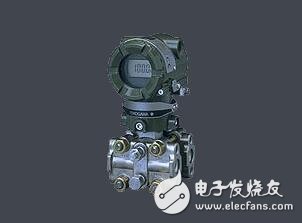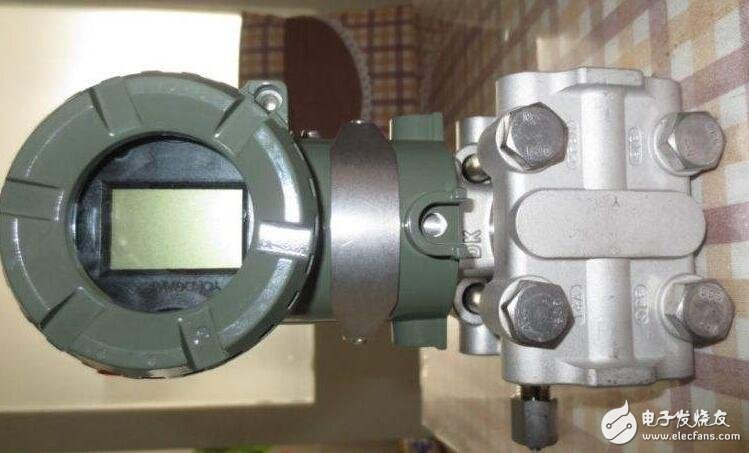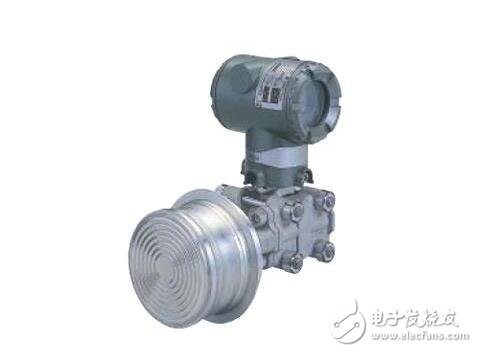EJA is synonymous with the instrument series under the Yokogawa Plant of Japan. The main products of EJA series are: pressure transmitter, differential pressure transmitter, liquid level changer, flow meter, etc. It is a high-performance intelligent instrument developed by Yokogawa Electric Co., Ltd. in Japan in 1994. The world's most advanced single crystal silicon resonant sensor technology has been well received by customers since its launch.
The development of EJA won the highest award in the Japanese industrial society - the Daehan Memorial Award and the Quality Product Award from Hashimoto Taro, and passed various safety certifications in advanced countries such as the United States, Britain, France, Germany, Russia, and China. The EJA produced by Chongqing Company guarantees the same quality as Yokogawa products of Japan, and has won praises from users and obtained certification for entering 200MW, 300MW and 600WM units.
This article mainly introduces the working principle of the eja transmitter and the key points of how to select the eja transmitter. Let's take a look.

1, EJA transmitter is not easy to be affected by thermocouple and voltage drop and temperature drift along the wire, can use very cheaper and thinner wire, saving a lot of cable and installation costs;
2, capacitive interference will lead to receiver resistance related error, for the 4-20mA two-wire loop, the receiver resistance is usually 250Ω, the resistance is small enough to produce significant error, therefore, the allowable wire length ratio voltage telemetry system Longer and farther;
3, EJA transmitter is very easy to add one or two lightning protection surge devices in the two-line output port, which is conducive to safety lightning protection;
4. Each single reading device or recording device can be switched between different channels with different lengths of wires, without the difference in precision due to the length of the wires, achieving distributed acquisition, centralized control, and using 4 mA for zero. Level makes it easy to judge open circuit and short circuit or sensor damage;
5. When the current source output resistance is large enough, the voltage induced in the wire loop through the magnetic field coupling will not have a significant impact, because the current caused by the interference source is extremely small, and the EJA transmitter can generally be reduced by using the twisted pair. Interference, three-wire and four-wire systems must use shielded wires, and the shield of the shielded wires should be properly grounded.

The differential pressure and pressure signals are respectively converted into frequency signals by the two upper H-shaped vibration beams on the single crystal silicon resonant sensor, and sent to the pulse counter, and the difference between the two frequencies is directly transmitted to the CPU for data processing, and D/ is performed. The A converter converts the output signal of the 4~20mADC corresponding to the input signal, and superimposes a BRAIN/HART digital signal on the analog signal for communication.
The characteristic correction memory built in the bellows assembly stores the ambient temperature, static pressure and input/output characteristic correction data of the sensor. Through the CPU operation, the transmitter can obtain excellent temperature characteristics and static pressure characteristics and input/output. characteristic. Digital communication via I/O port with external devices (such as handheld intelligent terminal BT200 or 275 and I/O card with communication function in DCS), ie high frequency 2.4 kHz (BRAIN protocol) or 1.2 kHz (HART) Protocol) The digital signal is superimposed on the 4~20mA signal line. When communicating, the frequency signal has no effect on the 4~20mA signal.
1. Structure principle The core part of the single crystal silicon resonant sensor is a micro-electro-mechanical processing technology (MEMS) on a single crystal silicon chip, and two H shapes with the same shape and size are formed at the center and the edge of the surface. The resonant beam (the H-shaped resonator has two vibrating beams) and is in the micro vacuum chamber so that it does not come into contact with the filling liquid, and ensures that the vibration is not affected by the air damping.
2. Principle of resonant beam vibration The silicon resonant beam is in the magnetic field provided by the permanent magnet, and forms a positive feedback loop with the transformer and amplifier to make the resonant beam oscillate in the loop.
3. Stress situation When the upper and lower surfaces of the monocrystalline silicon wafer are subjected to pressure and form a pressure difference, deformation will occur, the center will be subjected to compressive force, and the edge will be subjected to tension. Therefore, the two shape vibrating beams respectively feel different strain effects. The central resonant beam is reduced in frequency by the compressive force, and the difference between the frequencies of the side resonant beams due to the tension corresponds to different pressure signals.
Excellent performance of EJA 1. Excellent temperature influence characteristics 2. Excellent static pressure influence characteristics 3. Excellent one-way overvoltage characteristics
EJX Series: A high quality electronic differential pressure transmitter with single crystal silicon sensor for flow of liquids, gases or vapors as well as level, density and pressure measurements. The static pressure can be displayed through the built-in display table or the BRAIN protocol or the HART communication protocol. It also features fast response, remote protocol setting, self-diagnostics, and optional high/low pressure alarm status output. FF fieldbus type is available. The EJX series standard configuration has TUV certification. Except for FF fieldbus type, it is suitable for SIL2 occasions.

1. What kind of pressure should be measured: first determine the maximum value of the measured pressure in the system. In general, you need to select a transmitter with a pressure range that is about 1.5 times larger than the maximum value. This is mainly in many systems, especially in water pressure measurement and processing, with peak and continuous irregular up and down fluctuations, which can damage the pressure sensor, continuous high pressure value or slightly beyond the transmitter. Calibrating the maximum value will shorten the life of the sensor, however, this will result in reduced accuracy. Thus, a buffer can be used to reduce the pressure glitch, but this will reduce the response speed of the sensor. Therefore, when selecting a transmitter, it is necessary to fully consider the pressure range, accuracy and stability.
2. What kind of pressure medium: We should consider the medium measured by the pressure transmitter. The viscous liquid and mud will block the pressure interface. Solvent or corrosive substances will not damage the transmitter and these. The material in direct contact with the media. These factors will determine whether to choose a direct barrier and a material that is in direct contact with the media. The contact medium part of a typical pressure transmitter is made of 316 stainless steel. If your medium is not corrosive to 316 stainless steel, then basically all pressure transmitters are suitable for measuring the pressure of the medium. If your medium is corrosive to 316 stainless steel, then we need to use a chemical seal, which not only can measure the pressure of the medium, but also effectively prevent the medium from contacting the wetted part of the pressure transmitter. Protect the pressure transmitter and extend the life of the pressure transmitter.
3. How much accuracy the transmitter needs: determine the accuracy, nonlinearity, hysteresis, non-repetition of the electromechanical business network, temperature, zero offset scale, temperature effect. But mainly by nonlinearity, hysteresis, non-repetition, the higher the accuracy, the higher the price. Each type of electronic measuring instrument will have accuracy error, but the accuracy level of each country is different. For example, the accuracy of national standards such as China and the United States is the best part of the linearity of the sensor, that is, we usually The accuracy of the measurement range is between 10% and 90%; the accuracy of the European standard is the worst part of the linearity, which is what we usually call the 0 to 10% and 90% to 100% of the measurement inverse. The precision between. If the accuracy of the European standard is 1%, the accuracy of the standard in China is 0.5%.
4, the temperature range of the transmitter: usually a transmitter will calibrate two temperature ranges, that is, the temperature range of normal operation and the range of temperature compensation. The normal operating temperature range refers to the temperature range when the transmitter is not damaged during operation. When the temperature is outside the range, the performance index of the application may not be achieved. The temperature compensation range is a typical range that is smaller than the operating temperature range. Working within this range, the transmitter will definitely achieve its performance specifications. Temperature changes affect its output in two ways, one is zero drift; the other is affecting full-scale output. For example: +/-X%/°C of full scale, +/-X%/°C of reading, +/-X% of full scale over temperature range, +/-X% of reading within temperature compensation range If there are no such parameters, it will lead to uncertainty in use. The change in the output of the transmitter is caused by a change in pressure or by a change in temperature. Temperature effects are the most complex part of understanding how to use the transmitter.

5. What kind of output signal is needed: mV, V, mA and frequency output digital output. The choice of output depends on various factors, including the distance between the transmitter and the system controller or display, whether there is “noise†or Other electronic interference signals. Whether the amplifier, the position of the amplifier, etc. are required. For many OEM devices with short distances between the transmitter and the controller, the most economical and effective solution for mA output transmitters is to use a transmitter with built-in amplification if the output signal needs to be amplified. For long-distance transmission or strong electrical interference signals, it is best to use mA output or frequency output. In environments where RFI or EMI specifications are high, in addition to the need to select mA or frequency output, special protection or filters are also considered. (Because of the needs of various acquisitions, there are many kinds of output signals of pressure transmitters on the market, mainly 4..20mA, 0..20mA, 0..10V, 0..5V, etc. But the more common ones are 4.20mA and 0..10V. Among the output signals I mentioned above, only ..20mA is two-wire system. The output we are talking about is several lines. Contains ground or shielded wire, others are three-wire)
6. What kind of excitation voltage is selected: The type of output signal determines how the excitation voltage is selected. Many amplifiers have built-in voltage regulators, so their supply voltage range is large. Some transmitters are quantitatively configured and require a stable operating voltage. Therefore, a working voltage that can be obtained determines whether or not to use a sensor with a regulator. When selecting a transmitter, it is necessary to consider the operating voltage and system cost.
7. Do you need an interchangeable transmitter: Determine if the transmitter you need can accommodate multiple systems. Generally speaking, this is very important. Especially for OEM products. Once the product is delivered to the customer, the cost of the customer's calibration is considerable. If the product is interchangeable, even changing the transmitter used will not affect the overall system.
8. The transmitter needs to maintain stability after working overtime: Most transmitters will “drift†after overtime work, so it is necessary to understand the stability of the transmitter before purchasing. Reduce the troubles that can arise in future use.
9. Transmitter package: The package of the transmitter is especially easy to ignore because it is a rack. However, this will gradually expose its shortcomings in the future. In the purchase of the transmitter must take into account the future working environment of the transmitter, how the humidity, how to install the transmitter, there will be strong impact or vibration.
10. What kind of connection is used between the transmitter and other electronic devices: Is it necessary to use a short distance connection? If a long-distance connection is used, is it necessary to use a connector?
11. Others: After confirming some of the above parameters, we must confirm the process connection interface of your pressure transmitter and the supply voltage of the pressure transmitter; if it is used in special occasions, it must also consider the explosion-proof and protection level.

APM 40v DC Power Supply is usually used in testing cable or circuit breaker filed. To protect user`s device and the laboratory power supply itself, protection functions of OVP,OCP,OPP etc. could be started according to the requirement.SCP function defaults to ON.
48vdc power supply provides built-in standard automobile electrical testing curves,users can select any built-in curve to do the DUT performance test directly according to their demand.
Some features of the power supply as below:
- Ultrafast respond time and high efficiency
- Accurate voltage and current measurement capability
- Constant Power and wide range of voltage and current output
- Equips with LIST waveform editing function
- Master/Slave parallel and series operation mode for up to 10 units
- Voltage drop compensation by remote sense line.
- Compliant with SCPI communication protocol
- Support RS232/RS485/LAN/USB (standard) ,GPIB (optional)
- Have obtained CE,UL,CSA,FCC.ROHS
40V DC Power Supply,Rack Mount DC Power Supply,Lab Power Supply,Pc Power Supply
APM Technologies Ltd , https://www.apmpowersupply.com